
Colombo Port City, the ‘City of Dreams’
# After a long drive from Colombo International Airport, you enter the city center of Colombo, the largest city in Sri Lanka. A large signboard that reads ‘Port City’ catches your eye on the beach. It would not be an exaggeration to say that this area is a large-scale new city construction site. Several excavators are lined up digging the ground, and the frames of office buildings are being erected here and there. Dozens of large cranes are positioned far offshore, reminiscent of a large-scale development project site like an artificial island in the United Arab Emirates (UAE).
# ‘ONE GALLE FACE’, a large shopping mall located near Colombo Port City. Even on a weekday morning, the inside of the mall is packed with people. Customers are overflowing from the PVR Cinema theater, as well as various clothing, cosmetics, and jewelry stores. Near the mall, high-rise buildings over 30 stories high, 5-star hotels, and casinos are being built one after another. Sri Lanka is a small island country with a per capita GDP of less than $4,000, but as the economy has been recovering recently, the demand for foreign tourists is increasing.

‘Jewel of the Indian Ocean’, ‘Center of the World’s Maritime Trade’. These are the modifiers given to Sri Lanka. For a while, it was considered a small island nation under India, a country to pass through on the way to the ‘natural honeymoon destination’ Maldives, but the atmosphere has changed recently. As the Sri Lankan economy has clearly revived, the government is trying hard to attract global companies by abolishing various taxes and regulations. Major countries around the world such as the United States, China, India, and Japan are also keeping an eye on Sri Lanka as a key maritime trade hub. We looked around the development site of Sri Lanka, which dreams of becoming a ‘global investment hub’ like Singapore.
Sri Lanka has suffered from a severe economic crisis for a long time. Due to the aftermath of the COVID-19 pandemic and various economic policy failures, it faced a national bankruptcy crisis, and declared default in May 2022 after failing to repay its external debt of 46 billion dollars (approximately 65.7 trillion won).
Finally, in March 2023, it was decided to receive a bailout of 2.9 billion dollars (about 4.1 trillion won) from the International Monetary Fund (IMF). The Sri Lankan government has been implementing large-scale austerity policies such as raising taxes and abolishing energy subsidies.
In the meantime, Sri Lankan politics have also undergone major changes. In September last year, opposition candidate Anura Dissanayake was elected president on a pledge to “recover the economy.” Afterwards, the National People’s Alliance (NPP) he led dissolved the National Assembly, which had only 3 out of 225 seats. In the early general election, the NPP won two-thirds of the seats, laying the foundation for stable national governance. For reference, Sri Lanka has a semi-presidential system that combines a presidential system and a parliamentary cabinet system.
As Sri Lankan politics stabilize, the economy is also gradually recovering. Sri Lanka’s economic growth rate was -7.3% in 2022, and it failed to escape the negative growth trend of -2.3% in 2023. As of 2023, the per capita GDP was assessed as weak economic fundamentals, reaching only $3,830.
However, the atmosphere has been changing little by little recently. The World Bank projects that Sri Lanka’s economic growth rate will turn positive at 2.2% in 2024. Some institutions are even projecting a rosy outlook that it will exceed 3%. This is largely due to the increase in foreign tourism demand, which has supported the Sri Lankan economy due to the COVID-19 pandemic, and the recovery of the garment export industry, one of the key industries. More than 40% of Sri Lanka’s exports are garment sewing industries. The United States and major EU countries often manufacture and export global brand garments in Sri Lanka.
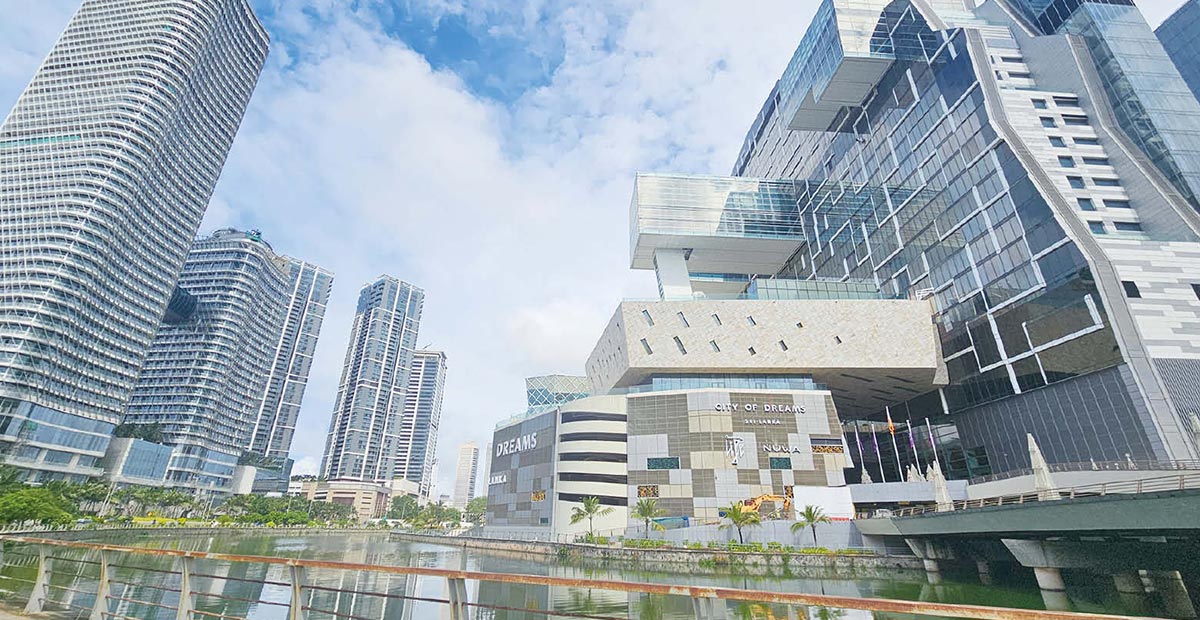
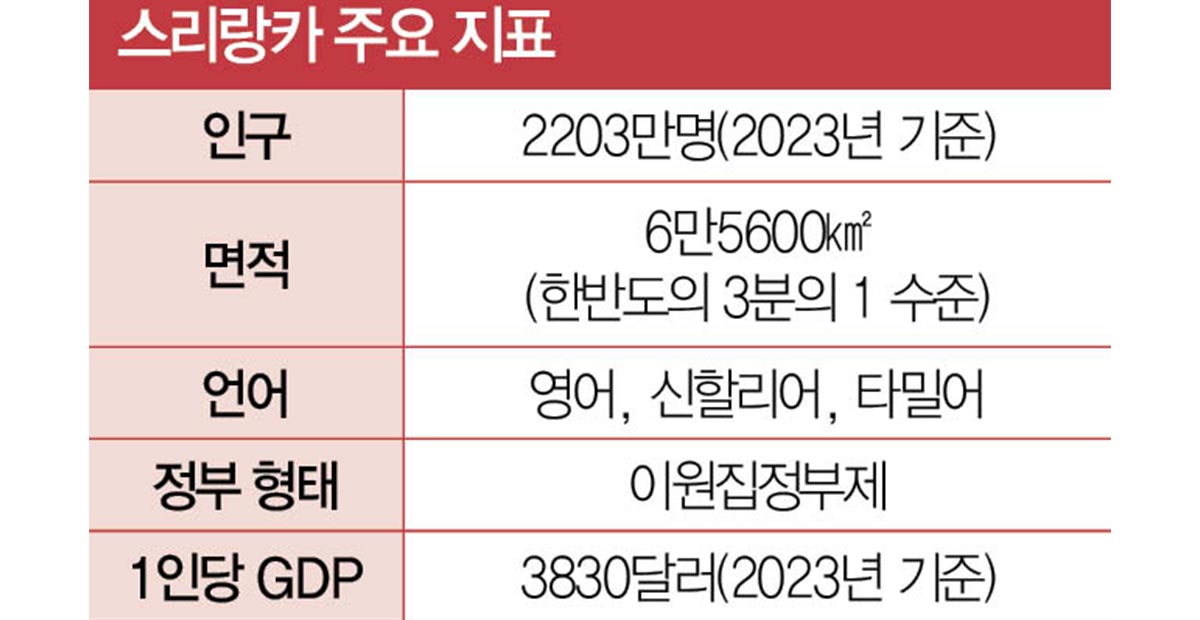
Colombo Port City Development Drives
The Sri Lankan government has ambitiously prepared a project to drive economic growth. It is the development project of Port City, a large artificial island located off the coast of Colombo and Colombo’s first mixed-use service economic zone (SEZ).
Port City has a total area of 2.69㎢ (approximately 810,000 pyeong), which is more than half the size of Yeouido in Seoul (4.5㎢). It is being promoted jointly by the Sri Lankan government and private developer China Harbor Construction Corporation (CHEC). This project, in which CHEC has invested 1.5 billion dollars, is considered the largest public-private partnership project in Sri Lanka’s history.
Port City is largely divided into five zones. It consists of the ‘Financial District’ with large office buildings and commercial facilities, ‘International Island’ with world-class universities, international schools, and convention centers, ‘Island Living’ with luxury villas and golf courses, ‘Central Park Living’ where you can enjoy nature while walking around the central park, and ‘The Marina’ with luxury residences.
Colombo Port City boasts quite a multifaceted appeal.
Companies investing in Port City can enjoy tax breaks such as corporate tax and value-added tax for 25 years from the time of moving in. Employees of companies moving in also do not have to pay individual income tax. Not only investors, but also spouses and children of investors are provided with visas valid for up to 10 years. Foreign shareholders can own 100% of the company’s shares, and there are no restrictions on hiring foreigners.
In particular, global companies can remit profits earned in Sri Lanka to their home countries without any amount restrictions. With a Port City-only account, you can freely trade in 16 designated foreign currencies, including dollars, euros, and won. This means that you can do business without exchange rate risk, as you can deposit and withdraw major countries’ currencies without central bank permission.
This is a structure similar to the Singapore financial hub model. Singapore has attracted most of the Asian financial headquarters of global companies leaving Hong Kong thanks to its deregulation policy that drastically reduces taxes such as corporate tax and income tax. Port City’s plan is to make it the ‘industrial hub of South Asia’ like Singapore.
It is also noteworthy that all of these benefits are disclosed on the Port City website so that investors can easily check them. Even if these benefits are reduced in the future, they will not be applied retroactively to existing contract holders. Port City will establish an international dispute resolution center so that investor conflicts can be easily resolved.
Tulsi Aluwihare, Managing Director of CHEC, Colombo Port City, emphasized, “Other countries often offer exceptional benefits to attract investment in the early stages of development projects, only to suffer losses later when the benefits are reduced. However, this has never happened in Sri Lanka. We have reduced investor uncertainty by transparently disclosing related laws and systems on our website so that anyone can check them.”
Various infrastructures for the Port City development project are also being built one after another.
The Sri Lankan government is currently constructing a highway from Colombo Airport to Port City. Once the highway is completed, it will take only 30 minutes to get from the airport to Port City. Thanks to this, it is said that investment demand from wealthy Middle Eastern countries is gradually increasing. Managing Director Tulsi Aluwihare added, “Thanks to various benefits, the cost of doing business in Port City is only 20% of that in Singapore. Sri Lanka is the only neutral country in South Asia, making it an attractive business location for companies that trade with countries such as India and Pakistan.”
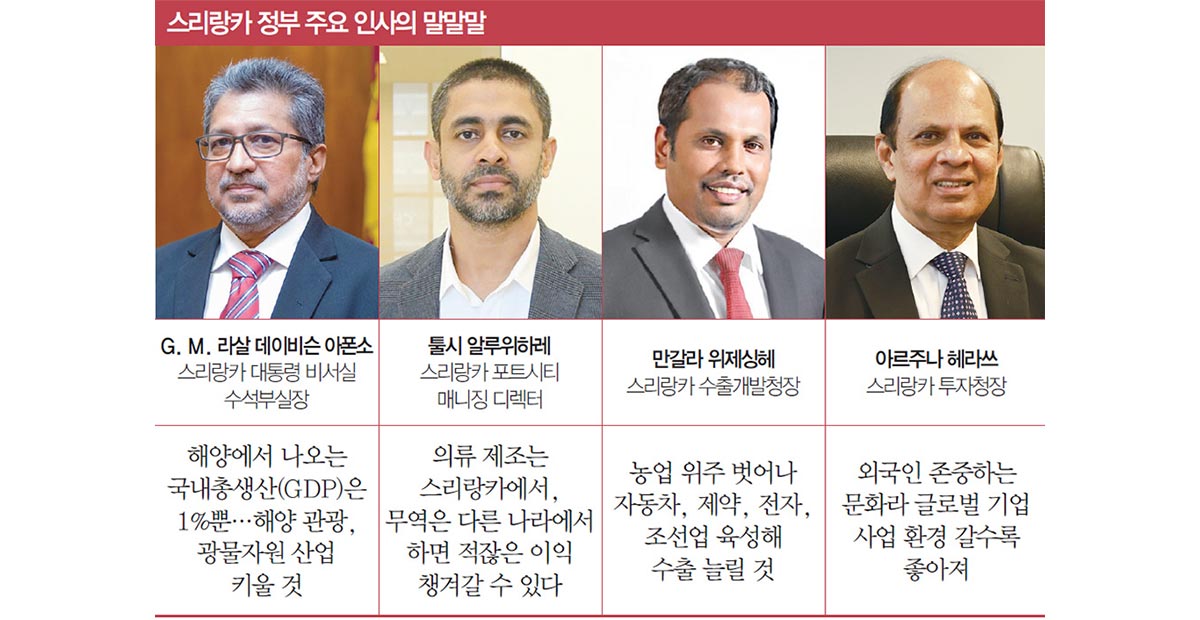
Is it okay to invest in Sri Lanka?
Even without the Silk Port City Project, there are many reasons to believe that Sri Lanka’s economic growth will accelerate.
First, it has an excellent geographic location. The Strait of Malacca, adjacent to Sri Lanka, handles about 60% of global maritime transport, and the nearby Strait of Hormuz is a key point for crude oil transport. Since it is a key maritime trade point located below India, major powers such as the US, China, India, and Japan have been working hard to increase their influence.
China has been investing in the Sri Lankan market for a long time. It is no exaggeration to say that most of the high-rise apartments in downtown Colombo were built with Chinese capital. Sri Lanka is also a key base area for China’s core project, the “One Belt One Road (land and maritime Silk Road connecting China, Central Asia, and Europe)” project.
Neighboring country India is also keeping an eye on the Sri Lankan market. Sri Lankan President Anura Dissanayake held a summit with Prime Minister Narendra Modi in the Indian capital New Delhi on December 16 last year. President Dissanayake emphasized that “the relationship with India occupies an important position in Sri Lanka’s foreign policy,” and stressed that Prime Minister Modi promised full support to Sri Lanka. Japan is also making an effort in the Sri Lankan market, such as directly participating in the construction of the new Colombo airport.
Son Joo-hong, head of KOTRA’s Colombo Trade Center, diagnosed that “many of the key projects commissioned by the Sri Lankan government are won and carried out by China and India. American companies are also interested in the port city development project, and Japan is also participating in key infrastructure projects such as the airport, showing that Sri Lanka is emerging as a key strategic point for a global power.”
Second, it is a Commonwealth country that uses English as its official language.
Sri Lanka was colonized by Portugal, the Netherlands, and the United Kingdom for 440 years starting in 1505. It has been less than 80 years since it gained independence from the United Kingdom in 1948. During the colonial period, it was influenced by the Anglo-American world and came to use English as its official language. While major Southeast Asian countries such as Vietnam and Cambodia have to use local languages, which is an obstacle to foreign investment, Sri Lanka is evaluated as having an advantage in attracting investment because it uses English as its official language. It is also easy for global companies entering the Sri Lankan market to utilize local talent.
“Since English is the official language in Sri Lanka, there are many young people with experience studying abroad in advanced countries, which makes the talent pool excellent. Moratuwa University near Colombo has many mechanical engineering professionals, and Sri Jayewardenepura University is also a prestigious university with excellent management and accounting departments. For global companies, the fact that they can hire excellent talent with a monthly salary of around $200 to $300 (approximately 300,000 to 450,000 won) is attractive,” explained Son Joo-hong, head of KOTRA’s Colombo Trade Center.
However, there are many obstacles to the Sri Lankan economy continuing its growth. Although politics have stabilized, it is still difficult to overlook risks. Sri Lankan President Anura Dissanayake has even emphasized “Clean Sri Lanka without corruption” as a key catchphrase.
This is not all. There are countless cases of global companies entering the Sri Lankan market struggling with legal disputes. It is said that there are more lawyers than engineers in Sri Lanka. This is because the demand for lawyers has increased explosively due to the many legal disputes surrounding major corporate businesses. Securing competent lawyers is important to win legal disputes, but foreign companies are vulnerable to local circumstances and often struggle during the dispute process.
Due to these variables, Korean companies have entered the Sri Lankan market by forming partnerships with local agents rather than establishing Sri Lankan corporations. LG Electronics has been selling home appliances such as air conditioners and TVs in partnership with local Sri Lankan company Avance Group. Samsung Electronics also sells smartphones and home appliances only through a liaison office rather than a local corporation. Hyundai Glovis, a logistics company of Hyundai Motor Group, has signed a terminal service contract with the Hambantota Port Company in southern Sri Lanka and has been transporting logistics to the Southwest Asian region. Ambassador Lee Mi-yeon of the Republic of Korea to Sri Lanka said, “It is very risky for Korean companies to enter the Sri Lankan market alone, so it seems advantageous to enter in the form of official development assistance (ODA) projects for major infrastructure such as roads, tunnels, and water management facilities.”
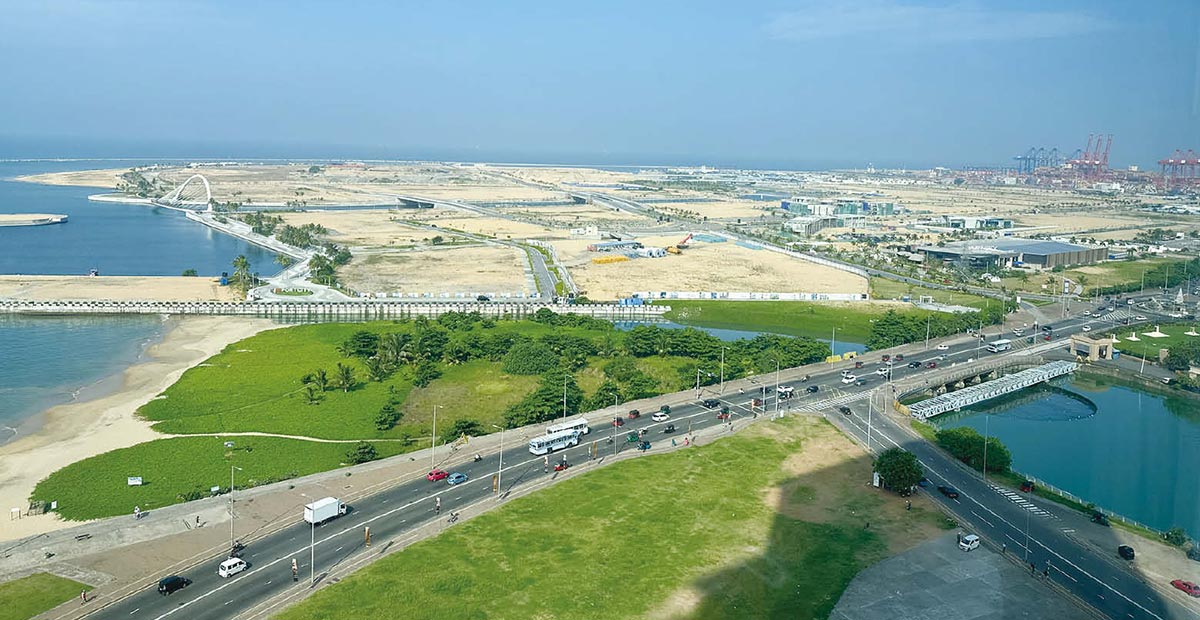
Among Korean companies that have advanced into Sri Lanka, Kiuda, which operates a Voluntary Carbon Market (VCM) platform business, is attracting attention. CEO Richard Yoon, who has extensive experience in overseas banks in Australia, New Zealand, and other countries, established a company in Sri Lanka with Dr. Sapumal Ahangama, a blockchain and artificial intelligence (AI) expert and professor at the National University of Sri Lanka. Recently, the company succeeded in developing an integrated carbon management platform based on blockchain.
CEO Richard Yoon of Kiuda emphasizes, “Our goal is to grow beyond a simple carbon offset credit trading platform into a global company that manages and services blockchain-based data in the voluntary carbon market.”
Harshana Suryaperuma, Sri Lanka’s Deputy Finance Minister, is considered the real power behind the new Sri Lankan government. In Sri Lanka, the president also holds the position of Finance Minister, so Deputy Minister Suryaperuma is equivalent to the Minister of Strategy and Finance and Deputy Prime Minister for Economic Affairs in the Korean government. I asked Deputy Minister Suryaperuma about his future plans for running the government.
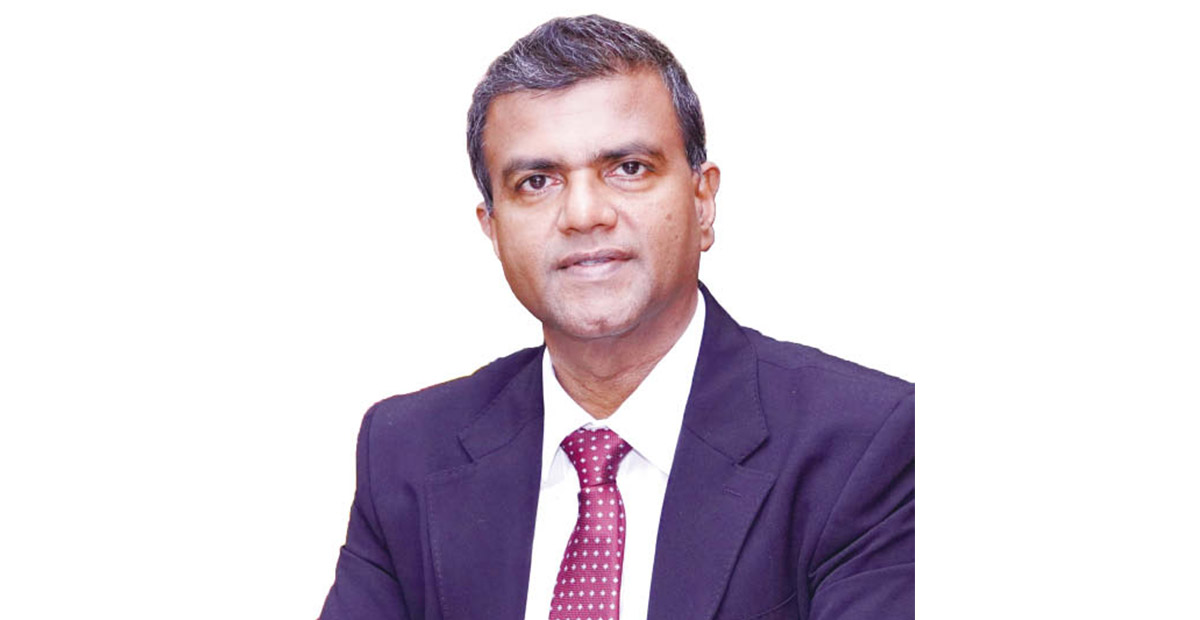
Q. The Sri Lankan economy was so difficult that it needed IMF bailout funds. What efforts did you make to gain the trust of the global market?
A. The Sri Lankan president has changed, and since the general elections have given more than two-thirds of the votes, we are preparing policies to reward the people. We completed the IMF working-level consultations right after the new government took office, and we plan to continue the agreement with the previous government to prevent policy instability.
As the Sri Lankan government and cabinet have stabilized, the financial market sentiment is also recovering. The Colombo Stock Index is continuing its all-time high. We are making every effort to attract global investment to continue Sri Lanka’s economic growth. Sri Lankan companies will feel the economic recovery, but global companies still lack relevant information, so we plan to focus on gaining the trust of the global market. At the same time, we will also work to increase policy transparency. The reason Sri Lanka has not attracted the attention of overseas investors is corruption. When evaluating businesses, we plan to look at industrial expertise and marketing network capabilities rather than relationships with politicians.
Q. Financial market stability is important, so what is the target amount of foreign exchange reserves?
A. The Sri Lankan government’s foreign exchange reserve policy is being implemented step by step according to the conditions set by the IMF. The first goal is to secure foreign exchange reserves of 10 billion dollars. To achieve this, the annual export target has been raised to 18 billion dollars. The plan is to increase exports to 45 billion dollars by 2030. While supporting domestic companies to increase their productivity, we will also provide various opportunities to foreign companies through various tax benefits.
Q. What are the charms of Sri Lanka?
A. Above all, Sri Lanka is located in a global strategic location close to the Indian Ocean. If you establish a company in Sri Lanka, you can reach major Asian countries in about 5 hours. The strong human resources are also attractive. Since there are many excellent IT talents who speak English, it is advantageous for companies to secure high-quality labor. We also plan to significantly ease licensing regulations so that global companies do not suffer from licensing regulations when starting new businesses.

Q. Can we say that the Sri Lankan economy has entered a recovery phase?
A. It is still difficult to say that it has reached a recovery phase. However, there are clear signs of improvement. If Sri Lanka’s credit rating rises in the new year, we will be able to feel confident in attracting foreign investment. In order to recover the economy, it is important to restore global investor confidence. We plan to attract a large amount of foreign investment by removing various investment obstacles. In fact, I am confident that investing in Sri Lanka is similar to investing in a ‘bargain sale’ product.
Q. What are the key industries leading the Sri Lankan economy?
A. In the short term, agriculture and tourism are the key industries leading the Sri Lankan economy, while in the medium to long term, information technology (IT), logistics, energy, and marine industries are the key industries leading the Sri Lankan economy. Attracting foreign tourists is important right now, and we plan to focus on attracting 4 to 5 million tourists every year. Since Sri Lanka has abundant IT talent, making Sri Lanka an IT-centered country is also an important goal. Geographically, Sri Lanka is an island country connecting Asia, the Middle East, and Africa, and we would like to develop the logistics industry with its developed ports. In the long term, we plan to focus on renewable energy sectors such as wind, solar, and hydroelectric power. In order to prepare for carbon neutrality by 2050, we plan to achieve RE100 (a goal of using 100% renewable energy) by 70% by 2030. In order for all of these industries to grow, the digital economy must be firmly established. We will digitize key industrial information and manage it transparently.
Q. Are there any risk factors to economic revitalization?
A. Our immediate goal is to resolve political corruption and bureaucracy issues and break up cartels that have persisted for a long time. Solving the problem of rural poverty is also an essential task, and we are considering how to solve this problem, as about half of the Sri Lankan population is demanding government subsidies and grants. Our goal is to achieve economic revitalization through political stability in Sri Lanka.
Q. What is the background behind the recent efforts of the Sri Lankan government to attract global companies?
A. Sri Lanka has a weak manufacturing base. Therefore, by attracting global companies in large numbers, it is trying to promote technology transfer and technology development. At the same time, it is also expected to create jobs. The Sri Lankan government will maintain a certain level of good relations with China and neighboring India, but it has a strong will to go its own way. As it has entered the IMF system led by the US, which is waging a trade war with China, it is determined to pursue practicality regardless of which country’s investment it attracts.
Q. If you were to pick a promising sector for Korean companies to advance into Sri Lanka, what would it be?
A. Renewable energy, waste management, and public infrastructure projects seem promising. The Sri Lankan government is currently pursuing large-scale funding to develop the Central Expressway connecting the inland. The Colombo Second Airport development project is also being promoted with funds from the Japan International Cooperation Agency (JICA), so I think it is entirely possible for Korean companies to participate in this project and form a consortium.
Q. What should we be careful of when doing business?
A. If a Korean company wants to advance into Sri Lanka, it must thoroughly check the basic contract with the mindset of ‘crossing a stone bridge after knocking on it’. Since Korean companies are generally weak in establishing legal relationships, it is necessary to have all documents notarized. The role of middle managers is important, so before establishing a corporation, middle managers must be hired as locals and a smooth communication channel must be established.
[Colombo (Sri Lanka) = Reporter Kim Kyung-min [email protected]]
[This article is from Maeil Business Newspaper No. 2294 (January 22, 2025 – February 4, 2025)]
[ⓒ Maeil Business Newspaper & mk.co.kr, Unauthorized reproduction and redistribution prohibited]
Source:Read More
